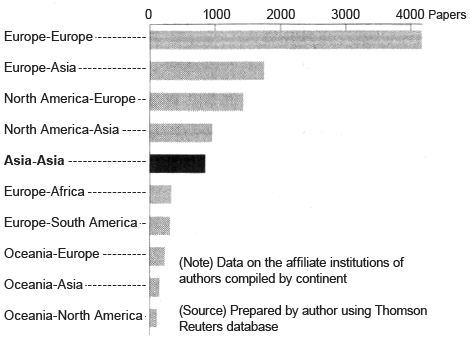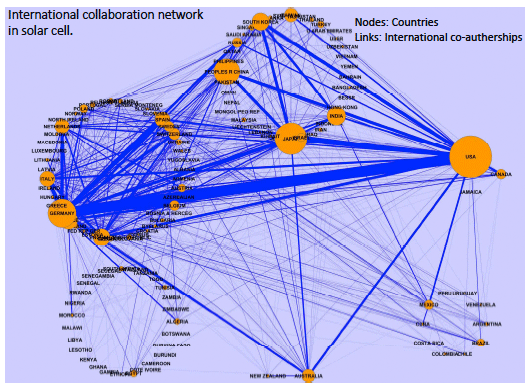Considering economic growth and the resolution of global environmental and other social issues as complementary and seeking to achieve both simultaneously through policies encouraging innovation is a concept rapidly gaining momentum worldwide.
Two unspoken premises underlie this concept. The first is the expansion of government involvement in innovation. Given the presence of externalities, problem-solving innovation often does not make rapid progress under market principles, and more intense involvement than ever is required from the government. The superiority of a country's strategy and the speed at which it can implement policy help determine whether or not that country is able to gain an edge in progressively fiercer global competition.
The other is the increasingly borderless nature of industrial and social policies. The world today faces many social issues in common. As a consequence, market integration and international development of technology will inevitably move ahead, with national policies impacting each other across borders. Multilateral cooperation in promptly resolving issues is beneficial in such circumstances. In fact, common growth strategies have already been proposed in such international venues as the Organization for Economic Co-operation and Development (OECD) and the Asia-Pacific Economic Cooperation (APEC) forum.
The idea behind Japan's own New Growth Strategy sits squarely in the middle of this global trend, and may be considered an approach designed to help Japan secure a status of importance by taking the lead within this trend while at the same time contributing to it. Gone is the era in which "industrial policy" symbolized Japan's heterogeneity. Are there any key points that have been overlooked in Japan's strategy? Let us study this question with a focus on the field of science and technology.
♦ ♦ ♦
Searching the Thomson Reuters database of the world's principal English-language journals reveals about 40,000 academic papers written on solar cells or fuel cells, two leading clean energy technologies. Also apparent is that the number of papers published each year is rapidly increasing. The authors of these papers hail from more than 6,000 universities and research institutes for each topic and from more than 100 countries. It is clear that clean energy research is growing across the globe.
Let us take a closer look utilizing the joint research of author and University of Tokyo research assistant professor Yuya Kajikawa and University of Tokyo project researcher Hajime Sasaki. A country-specific examination of the affiliate institutions of authors of papers on these showcase technologies shows conspicuous growth in the number of authors from three Asian countries: China, South Korea and India. China is fourth worldwide and India fifth in the total number of papers on solar cells, while China ranks second and South Korea fifth in papers on fuel cells (totals from 1945 to September 2009).
Underpinning this growth are policies in Japan that promote active investment in science and technology, foster world-class universities, and encourage outstanding researchers to return home from overseas. Japan ranks second and third place in the world in terms of total output of papers on solar cells and fuel cells, respectively. In papers produced annually, however, China has eclipsed Japan in papers on solar cells since 2007 and on fuel cells since 2006.
Taking a broader global perspective, the rise of China, South Korea and India has established a balanced "tripolar knowledge structure" among North America, Europe and Asia. Asia has now become a global growth center for science and technology knowledge as well. Only ten years ago Japan boasted an overwhelming presence within Asia in a tripolar structure comprising North America, Europe and Japan, but the 21st century has redrawn the geopolitical map of science and technology capabilities.
♦ ♦ ♦
Next, let us look quantitatively at international cooperation using information on co-authorships of journal papers. The bibliographic information on papers in the database includes the names of authors and the institutions with which they are affiliated. For our purposes here, internationally co-authored papers will be defined as those written by multiple authors affiliated with research institutions in differing countries. This co-authorship information is frequently used as a means of objectively ascertaining the existence of cooperation. Figure 1 below shows the numbers of internationally co-authored papers on solar cells by continent.


[Click to enlarge (PDF:529KB)]
Figure 1 indicates an overwhelming number of papers co-authored by authors from different countries within Europe, followed by Europe-Asia and North America-Europe co-authorship. It is thus apparent that a network of research cooperation has been established with Europe as its largest hub.
Also noteworthy is the low level of research cooperation within Asia, which amounts to a mere one-fourth of that found within Europe. There are relatively few instances of cooperation between Asia and Europe or Asia and North America. Research cooperation is less likely to be pursued within Asia and is more likely to be directed at Europe and North America. These numbers do not adequately reflect the rapid rise in the research capabilities of Asian countries, reflecting a "valley" in Asia's research cooperation.
How should this situation be assessed from Japan's standpoint? What strategy issues does it present?
First, it should be recognized that Japan's strategy of retaining high added-value research and mother factory functions in Japan and only pursuing divisions of labor with Asia is fated to collapse sooner or later due to the rapid rise in the scientific and technical capabilities of China, South Korea and India. Steps will need to be taken to realize the more difficult objective of Japan acquiring added value within a more complex structure that includes basic research upstream.
Next, neglecting the "valley" in cooperation with Asia will mean failing to incorporate Asia's strength in the development of innovative new products. Cooperative relations affected centrifugally will likely steer international negotiations aimed at acquiring markets for new products or international standards in disadvantageous directions. Policy intervention here is also needed to quickly bridge the "valley."
As a solution, I propose that the creation of an "Asian Science and Technology Community" be incorporated into Japan's growth strategy. Prerequisite to this, of course, is that Japan face up to the growing scientific and technological capabilities of the three previously mentioned countries as well as Singapore and others. Outdated perceptions of these countries from three or five years ago should be cast aside.
In addition, a shift should be made from "vertical cooperation" centered on technology transfers to "horizontal cooperation" aimed at resolving common issues. Cooperation with Asia does indeed constitute a key feature in the current new economic growth strategy, but the countries of Asia, despite their differing circumstances, tend to be lumped together, and conventional vertical cooperation remains a dominant theme. With little time left, we need to be bolder in changing tracks.
♦ ♦ ♦
I offer three specific measures for realizing these objectives. The first is establishing a research fund to expand both cooperation within Asia and Asia-centric cooperation that involves Europe and North America. As previously mentioned, science and technology cooperation within Europe is thriving, and this can be attributed in great part to the Framework Programme, a European Union (EU) scheme for subsidizing multinational cooperation.
This Framework Programme is non-exclusive, allowing participation by countries outside the region. Recent figures show that China ranks third behind the US and Russia in the number of projects in which it participates, and the program has proven of use in expanding cooperation between Europe and China. Although its procedures have been criticized as bureaucratic, the Programme offers a valuable reference.
The second measure is drafting cooperation strategies for each priority sector. In sectors such as clean energy in which scholarly efforts and industrial technology are not so far apart, even academic research cannot necessarily be termed a non-competitive area. Level-headed analyses should be conducted in terms of the types of cooperation whose expansion should be given priority, suitable partners for such cooperation (including their strengths and weaknesses), and collaboration with other countries. Thereafter, a national strategy should be devised that extends as far as the acquisition of international standards.
The third measure is laying the foundations for cooperation. Europe has put together the PV European Research Area Network , and Japan undoubtedly should endeavor to build a similar network. Dynamic personnel exchange will serve as a seedbed for cooperation. There is also leeway for accepting a greater number of outstanding overseas students from Asia as well as drastically expanding opportunities to study abroad in Asia for Japanese youths.
* Translated by RIETI.
January 13, 2011 Nihon Keizai Shimbun


